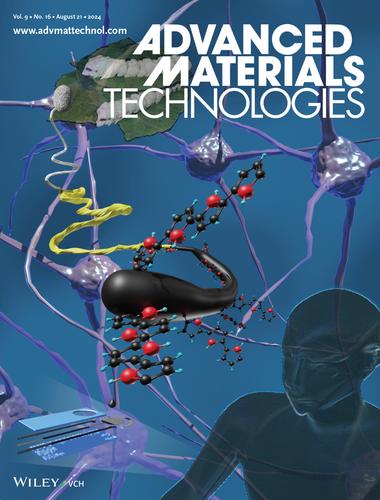将生物聚合物转化为具有高导电性、生物相容性和生物降解性的紫外线交联导电油墨(Adv.)
IF 6.4
3区 材料科学
Q1 MATERIALS SCIENCE, MULTIDISCIPLINARY
引用次数: 0
摘要
生物相容性导电油墨在文章编号 2302163 中,Seungae Lee 和 Euiseok Jeong 通过在生物聚合物上接枝聚吡咯,开发出生物相容性和紫外线交联导电油墨,用于植入式生物电子学。从封面图片顶部向中间延伸的图表示吡咯在从蚕茧中提取的丝胶上的聚合。下图和背景中的神经元图像说明导电油墨应用于植入式生物传感器。本文章由计算机程序翻译,如有差异,请以英文原文为准。

Conversion of Biopolymer to UV-Cross-Linkable Conductive Ink with High Conductivity, Biocompatibility, and Biodegradability (Adv. Mater. Technol. 16/2024)
Biocompatible Conductive Inks
In article number 2302163, Seungae Lee and Euiseok Jeong develop biocompatible and UV-cross-linkable conductive inks for implantable bioelectronics by grafting polypyrrole on biopolymers. The figure extending from the top to the center of the cover image represents polymerization of pyrrole on sericin extracted from cocoons. The figure at bottom and the image of neurons in the background illustrate conductive inks are applied to implantable biosensor.
求助全文
通过发布文献求助,成功后即可免费获取论文全文。
去求助
来源期刊

Advanced Materials Technologies
Materials Science-General Materials Science
CiteScore
10.20
自引率
4.40%
发文量
566
期刊介绍:
Advanced Materials Technologies Advanced Materials Technologies is the new home for all technology-related materials applications research, with particular focus on advanced device design, fabrication and integration, as well as new technologies based on novel materials. It bridges the gap between fundamental laboratory research and industry.
 求助内容:
求助内容: 应助结果提醒方式:
应助结果提醒方式:


